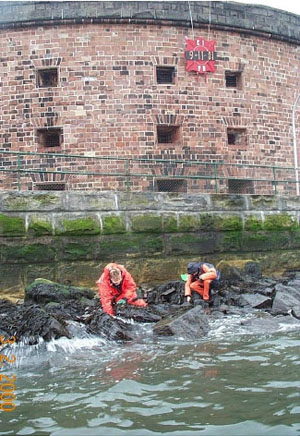
As the only continuous coastalmonitoring program of these sentinel species that is national in scope, the MWP provides a unique and unparalleled opportunityto determine national, regional and local perspectives of the health of our coastal ecosystems. Thisbaseline information isvital for determining degrading conditions as environmental stressors, including climate changeand other natural and human-causeddisasters,continue to impact coastal resources.
TheNS&T MWP uses oysters and mussels as sentinel organisms to monitor the health of ournation’s coastal and marine waters, including Alaska, Hawaii, Puerto Rico, and the Great Lakes. The program, whichbegan in 1986 with 145 monitoring sites, today encompasses over 300 coastal locations nationwide, where bivalvesare collected and measured for contaminant concentrations (organic compounds and metals).
For more information, contact Dennis.Apeti@noaa.gov.
*Text updated 2/6/14.
